Developing Heterogeneous Porous 3D-Printed SiO2-Pd-K2SiO3 Monolithic Catalyst via Surface MOF Growth and Pyrolysis for the Synthesis of Antitumoral Isatins
Abstract
1. Introduction
2. Materials and Methods
2.1. Synthesis of the Monolithic 3D-SiO2@Zn/Pd@K2SiO3 Catalyst
2.1.1. 3D-Printed SiO2 Monolith Support Fabrication
2.1.2. Surface Activation and Impregnation
2.1.3. Surface MOF Growth and Metalation
2.1.4. Impregnation with Potassium Silicate
2.1.5. Pyrolysis
2.2. Techniques and Equipment for Catalyst Characterization
2.3. Chemistry
2.3.1. Synthesis of Precursors 10 and 11
2.3.2. General Procedure for Double Heck Reactions (Compounds 8, 15, 16, 17, 25, 26, 27)
2.3.3. General Procedure for Double Stille Reactions (Synthesis of Compounds 23, 24, 29, 30, 31, and 32)
2.3.4. General Procedures for Suzuki Reactions
2.3.5. Hot Filtration Test and Recyclability
2.4. Anticancer Activity In Vitro
2.4.1. Cell Lines and Cell Culture Conditions
2.4.2. Cell Viability
3. Results and Discussion
3.1. Design of the Chemical Library
3.2. Design and Synthesis of the 3D-SiO2@Pd@K2SiO3 Catalyst
3.2.1. Design of the 3D-Printed Catalytic System
3.2.2. Synthesis of the Catalyst
3.3. Characterization of the Catalyst
3.4. Results of Catalytic Activity
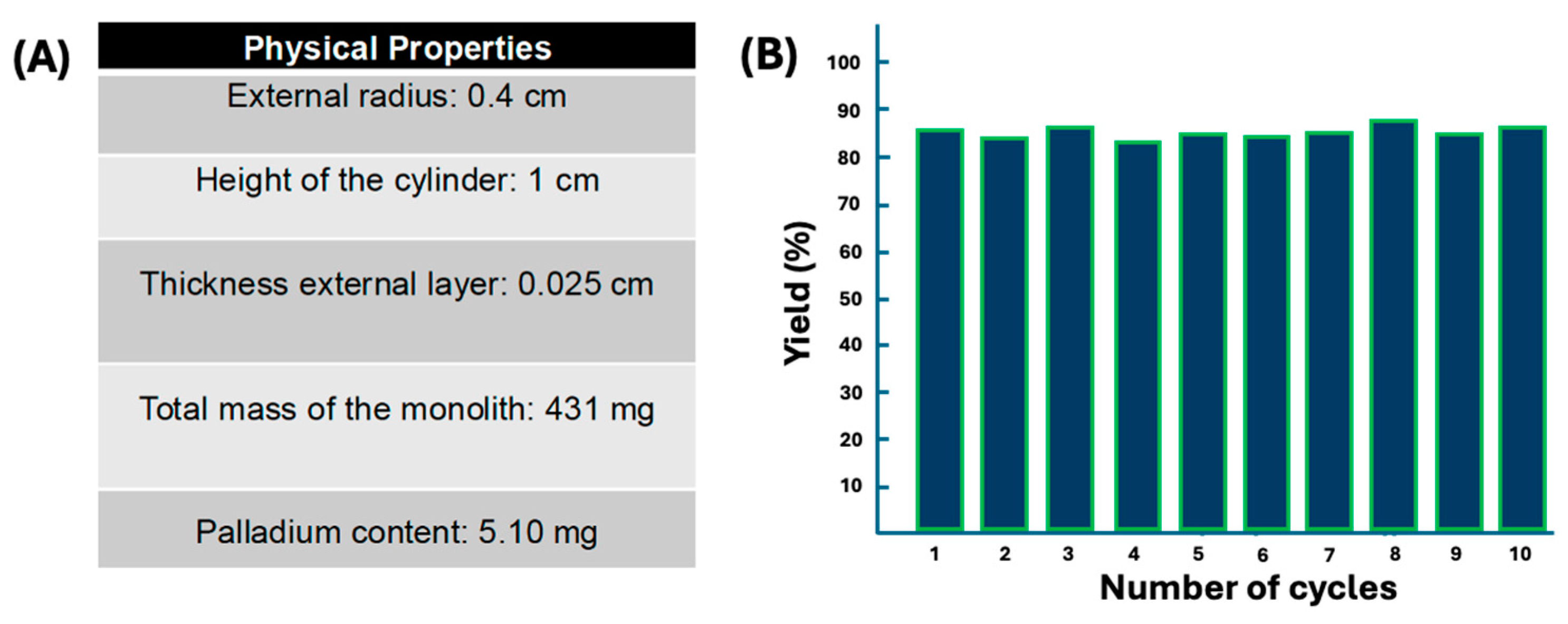
3.5. Cytotoxic Activity of Substituted Isatins in HeLa, MDA-MB-231, and MCF-7 Cell Lines
| Compound | HeLa | MCF-7 | MDA-MB231 |
|---|---|---|---|
| IC50 (μM) a | |||
| 8 | 1.0 [19] b | 19.9 | 17.8 |
| 12 | 10.8 [19] b | 13.6 | 15.7 |
| 13 | 20.0 | 33.1 | 19.8 |
| 14 | 6.9 | 28.1 | 34.3 |
| 15 | 12.4 | 26.3 | 14.3 |
| 16 | 11.2 | 13.8 | 17.8 |
| 17 | 4.3 | 16.5 | 16.9 |
| 18 | 9.3 | 9.2 | 23.8 |
| 19 | 9.9 | 1.1 | 20.7 |
| 20 | 4.3 | 1.8 | 14.9 |
| 21 | 12.3 | 0.6 (690 nM) | 12.3 |
| 22 | 5.0 | 1.6 | 11.7 |
| 23 | 2.4 | 0.5 (501 nM) | 15.8 |
| 24 | 2.3 | 0.8 (880 nM) | 14.8 |
| 25 | 11.9 | 8.2 | 12.3 |
| 26 | 3.1 | 1.6 | 13.9 |
| 27 | 15.5 | 2.4 | 12.7 |
| 28 | 13.7 | 12.6 | 20.8 |
| 29 | 17.5 | 9.9 | 16.8 |
| 30 | 14.7 | 6.3 | 17.9 |
| 31 | 13.5 | 8.5 | 11.9 |
| 32 | 7.8 | 8.1 | 9.1 |
| 33 | 8.4 | 9.1 | 11.9 |
| 34 | 9.7 | 4.7 | 12.7 |
| 35 | 7.8 | 1.2 | 14.9 |
| Doxorubicin | 2.4 [63] b | 7.3 [13] b | 9.6 [64] b |
| Sunitinib | 2.4 [63] b | 10.7 [65] b | 10 (57%) [66] b,c |
4. Conclusions
Supplementary Materials
Author Contributions
Funding
Institutional Review Board Statement
Informed Consent Statement
Data Availability Statement
Acknowledgments
Conflicts of Interest
References
- Mirabelli, C.C.; Coppola, L.; Salvatore, M.; Candi, C.; D’Amico, M. Cancer Cell Lines Are Useful Model Systems for Medical Research. Cancers 2019, 11, 1098. [Google Scholar] [CrossRef]
- Chauhan, G.; Pathak, D.P.; Ali, F.; Dubey, P.; Khasimbi, S. In-vitro Evaluation of Isatin Derivatives as Potent Anti-Breast Cancer Agents against MCF-7, MDA-MB-231, MDA-MB-435 and MDA-MB-468 Breast Cancer Cell Lines: A Review. Anti-Cancer Agents Med. Chem. 2022, 22, 1883–1896. [Google Scholar] [CrossRef] [PubMed]
- Masters, J.R. HeLa cells 50 years on: The good, the bad and the ugly. Nat. Rev. Cancer 2002, 2, 315–319. [Google Scholar] [CrossRef] [PubMed]
- Sharma, M.P.; Shukla, S.; Misra, G. Recent advances in breast cancer cell line research. Int. J. Cancer 2024, 154, 1683–1693. [Google Scholar] [CrossRef]
- Huang, Z.; Yu, Y.; Tang, J. Characterization of Triple-Negative Breast Cancer MDA-MB-231 Cell Spheroid Model. OncoTargets Ther. 2020, 13, 4849–4855. [Google Scholar] [CrossRef] [PubMed]
- Nath, R.; Pathania, S.; Grover, G.; Akhtar, M.J. Isatin Containing Heterocycles for Different Biological Activities: Analysis of Structure Activity Relationship. J. Mol. Struct. 2020, 1222, 128900. [Google Scholar] [CrossRef]
- Dhokne, P.; Sakla, A.P.; Shankaraiah, N. Structural Insights of Oxindole-Based Kinase Inhibitors as Anticancer Agents: Recent Advances. Eur. J. Med. Chem. 2021, 216, 113334. [Google Scholar] [CrossRef]
- Ferraz de Paiva, R.E.; Vieira, E.G.; Rodrigues da Silva, D.; Wegermann, C.A.; Costa Ferreira, A.M. Anticancer Compounds Based on Isatin-Derivatives: Strategies to Ameliorate Selectivity and Efficiency. Front. Mol. Biosci. 2021, 7, 627272. [Google Scholar] [CrossRef]
- Czeleń, P.; Skotnicka, A.; Széler, B. Designing and Synthesis of New Isatin Derivatives as Potential CDK2 Inhibitors. Int. J. Mol. Sci. 2023, 24, 8046. [Google Scholar] [CrossRef]
- Chowdhary, S.; Shalini; Arora, A.; Kumar, V. A Mini Review on Isatin, an Anticancer Scaffold with Potential Activities against Neglected Tropical Diseases (NTDs). Pharmaceuticals 2022, 15, 536. [Google Scholar] [CrossRef]
- Kosmider, O.; Denis, N.; Dubreuil, P.; Moreau-Gachelin, F. Semaxinib (SU5416) as a therapeutic agent targeting oncogenic Kit mutants resistant to imatinib mesylate. Oncogene 2007, 26, 3904–3908. [Google Scholar] [CrossRef]
- Tekisogullari, K.; Topcu, M. The effects of sunitinib malate used in targeted therapy on the proliferation of HeLa cells in vitro. JBUON 2013, 18, 253–260. [Google Scholar] [PubMed]
- Eldehna, W.M.; Fares, M.; Ibrahim, H.S.; Alsherbiny, M.A.; Aly, M.H.; Ghabbour, H.A.; Abdel-Aziz, H.A. Synthesis and Cytotoxic Activity of Biphenylurea Derivatives Containing Indolin-2-one Moieties. Molecules 2016, 21, 762. [Google Scholar] [CrossRef] [PubMed]
- Arshad, N.; Mir, M.I.; Perveen, F.; Javed, A.; Javaid, M.; Saeed, A.; Channar, P.A.; Farooqi, S.I.; Alkahtani, S.; Anwar, J. Investigations on Anticancer Potentials by DNA Binding and Cytotoxicity Studies for Newly Synthesized and Characterized Imidazolidine and Thiazolidine-Based Isatin Derivatives. Molecules 2022, 27, 354. [Google Scholar] [CrossRef] [PubMed]
- Al-Salem, H.S.; Abuelizz, H.A.; Issa, I.S.; Mahmoud, A.Z.; AlHoshani, A.; Arifuzzaman, M.; Rahman, A.F.M.M. Synthesis of Novel Potent Biologically Active N-Benzylisatin-Aryl Hydrazones in Comparison with Lung Cancer Drug ‘Gefitinib’. Appl. Sci. 2020, 10, 3669. [Google Scholar] [CrossRef]
- Chang, Y.; Yuan, Y.; Zhang, Q.; Rong, Y.; Yang, Y.; Chi, M.; Liu, Z.; Zhang, Y.; Yu, P.; Teng, Y. Effects of an Isatin Derivative on Tumor Cell Migration and Angiogenesis. RSC Adv. 2020, 10, 1191–1197. [Google Scholar] [CrossRef]
- Teng, Y.-O.; Zhao, H.-Y.; Wang, J.; Liu, H.; Gao, M.-L.; Zhou, Y.; Han, K.-L.; Fan, Z.-C.; Zhang, Y.-M.; Sun, H.; et al. Synthesis and Anti-Cancer Activity Evaluation of 5-(2-Carboxyethenyl)-Isatin Derivatives. Eur. J. Med. Chem. 2016, 112, 145–156. [Google Scholar] [CrossRef]
- Han, K.; Zhou, Y.; Liu, F.; Guo, Q.; Wang, P.; Yang, Y.; Song, B.; Liu, W.; Yao, Q.; Teng, Y.; et al. Design, Synthesis and In Vitro Cytotoxicity Evaluation of 5-(2-Carboxyethenyl)isatin Derivatives as Anticancer Agents. Bioorg. Med. Chem. Lett. 2014, 24, 591–594. [Google Scholar] [CrossRef]
- Malatini, C.; Carbajales, C.; Luna, M.; Beltrán, O.; Amorín, M.; Masaguer, C.F.; Blanco, J.M.; Barbosa, S.; Taboada, P.; Coelho, A. 3D-Printing of Capsule Devices as Compartmentalization Tools for Supported Reagents in the Search of Antiproliferative Isatins. Pharmaceuticals 2023, 16, 310. [Google Scholar] [CrossRef]
- Biffis, A.; Centomo, P.; Del Zotto, A.; Zecca, M. Pd Metal Catalysts for Cross-Couplings and Related Reactions in the 21st Century: A Critical Review. Chem. Rev. 2018, 118, 2249–2295. [Google Scholar] [CrossRef]
- Torborg, C.; Beller, M. Recent Applications of Palladium-Catalyzed Coupling Reactions in the Pharmaceutical Industry. Angew. Chem. Int. Ed. Engl. 2009, 48, 9186–9211. [Google Scholar] [CrossRef]
- Farina, V. High-Throughput Palladium Catalysis in Cross-Coupling Synthesis. Catal. Today 2004, 34, 307–343. [Google Scholar] [CrossRef]
- Garrett, C.; Prasad, K. The Art of Meeting Palladium Specifications in Active Pharmaceutical Ingredients Produced by Pd-Catalyzed Reactions. Adv. Synth. Catal. 2004, 346, 889–900. [Google Scholar] [CrossRef]
- Beletskaya, I.P.; Cheprakov, A.V. The Heck Reaction as a Sharpening Stone of Palladium Catalysis. Chem. Rev. 2000, 100, 3009–3066. [Google Scholar] [CrossRef]
- Buskes, M.J.; Blanco, M.J. Impact of Cross-Coupling Reactions in Drug Discovery and Development. Molecules 2020, 25, 3493. [Google Scholar] [CrossRef]
- Adrangi, B.; Chatrath, A. The Dynamics of Palladium and Platinum Prices. Comput. Econ. 2002, 19, 179–195. [Google Scholar] [CrossRef]
- Alimi, O.A.; Akinnawo, C.A.; Meijboom, R. Monolith catalyst design via 3D printing: A reusable support for modern palladium-catalyzed cross-coupling reactions. New J. Chem. 2020, 44, 18867–18878. [Google Scholar] [CrossRef]
- Molavi, H.; Mirzaei, K.; Barjasteh, M.; Rahnamaee, S.Y.; Saeedi, S.; Hassanpouryouzband, A.; Rezakazemi, M. 3D-Printed MOF Monoliths: Fabrication Strategies and Environmental Applications. Nano-Micro Lett. 2024, 16, 272. [Google Scholar] [CrossRef]
- Qi, X.; Liu, K.; Chang, Z. Beyond powders: Monoliths on the basis of metal-organic frameworks (MOFs). J. Chem. Eng. 2022, 441, 135953. [Google Scholar] [CrossRef]
- Tan, L.; Tan, B. Functionalized hierarchical porous polymeric monoliths as versatile platforms to support uniform and ultrafine metal nanoparticles for heterogeneous catalysis. J. Chem. Eng. 2020, 390, 124485. [Google Scholar] [CrossRef]
- Tomašić, V.; Jovic, F. State of the art in the monolithic catalysts/reactors. Appl. Catal. 2006, 311, 112–121. [Google Scholar] [CrossRef]
- Williams, J.L. Monolith structures, materials, properties and uses. Catal. Today. 2001, 69, 3–9. [Google Scholar] [CrossRef]
- Boger, T.; Heibel, A.K.; Sorensen, C.M. Monolithic Catalysts for the Chemical Industry. Ind. Eng. Chem. Res. 2004, 43, 4602–4611. [Google Scholar] [CrossRef]
- Palao, E.; Alcazar, J. Chapter 3: Organometallic Chemistry in Flow in the Pharmaceutical Industry. In Flow Chemistry: Integrated Approaches for Practical Applications; Luis, S.V., García-Verdugo, E., Eds.; The Royal Society of Chemistry: London, UK, 2019; pp. 86–128. [Google Scholar] [CrossRef]
- Dory, H.; Petit, E.; El-Sayegh, S.; Badouric, L.; Castro, V.; Bechelany, M.; Voiry, D.; Miele, P.; Lajaunie, L.; Salameh, C. Monolith Catalyst Design by Combining 3D Printing and Atomic Layer Deposition: Toward Green Palladium-Catalyzed Cross-Coupling Reactions. Adv. Eng. Mater. 2024, 27, 2401546. [Google Scholar] [CrossRef]
- Yuan, H.; Liu, H.; Zhang, B.; Zhang, L.; Wang, H.; Su, D.S. A Pd/CNT-SiC monolith as a robust catalyst for Suzuki coupling reactions. Phys. Chem. Chem. Phys. 2014, 16, 11178–11181. [Google Scholar] [CrossRef]
- Bulatov, E.; Lahtinen, E.; Kivijärvi, L.; Hey-Hawkins, E. Haukka. ChemCatChem 2020, 12, 4831. [Google Scholar] [CrossRef]
- Tubío, C.R.; Azuaje, J.; Escalante, L.; Coelho, A.; Guitián, F.; Sotelo, E.; Gil, A. 3D Printing of a Heterogeneous Copper-Based Catalyst. J. Catal. 2016, 334, 110–115. [Google Scholar] [CrossRef]
- Wu, S.; Xu, X.; Zhang, X.; Ji, Z.; Jia, X.; Wang, X. 3D-Printing Functional Ceramic for One-Step Fabrication of Pd/C Catalytic Reactor. Addit. Manuf. Front. 2024, 3, 200167. [Google Scholar] [CrossRef]
- Díaz-Marta, A.S.; Tubío, C.R.; Carbajales, C.; Fernández, C.; Escalante, L.; Sotelo, E.; Guitián, F.; Barrio, V.L.; Gil, A.; Coelho, A. Three-Dimensional Printing in Catalysis: Combining 3D Heterogeneous Copper and Palladium Catalysts for Multicatalytic Multicomponent Reactions. ACS Catal. 2018, 8, 392–404. [Google Scholar] [CrossRef]
- Díaz-Marta, A.S.; Yañez, S.; Lasorsa, E.; Pacheco, P.; Tubío, C.R.; Rivas, J.; Piñeiro, Y.; Gómez, M.A.G.; Amorín, M.; Guitián, F.; et al. Integrating Reactors and Catalysts through Three-Dimensional Printing: Efficiency and Reusability of an Impregnated Palladium on Silica Monolith in Sonogashira and Suzuki Reactions. ChemCatChem 2020, 12, 1762. [Google Scholar] [CrossRef]
- Tubio, C.R.; Malatini, C.; Barrio, V.L.; Masaguer, C.F.; Amorín, M.; Nabgan, W.; Taboada, P.; Guitián, F.; Gil, A.; Coelho, A. 3D Printing of a Palladium-Alumina Cermet Monolithic Catalyst: Catalytic Evaluation in Microwave-Assisted Cross-Coupling Reactions. Mater. Today Chem. 2023, 27, 101355. [Google Scholar] [CrossRef]
- Garcia Garcia, P.; Müller, M.; Corma, A. MOF catalysis in relation to their homogeneous counterparts and conventional solid catalysts. Chem. Sci. 2014, 5, 2979–3007. [Google Scholar] [CrossRef]
- Isaeva, V.I.; Kustov, L.M. The application of metal-organic frameworks in catalysis (Review). Pet. Chem. 2010, 50, 167–180. [Google Scholar] [CrossRef]
- Li, D.; Xu, H.Q.; Jiao, L.; Jiang, H.L. Metal-Organic Frameworks for Catalysis: State of the Art, Challenges, and Opportunities. Energy Chem. 2019, 1, 100005. [Google Scholar] [CrossRef]
- El Ouardi, M.; Elaouni, A.; Ahsaine, H.A.; Baqais, A.; Saadi, M. ZIF-8 metal organic framework composites as hydrogen evolution reaction photocatalyst: A review of the current state. Chemosphere 2022, 308, 136483. [Google Scholar] [CrossRef]
- Ding, S.; Yan, Q.; Jiang, H.; Zhong, Z.; Chen, R.; Xing, W. Fabrication of Pd@ZIF-8 catalysts with different Pd spatial distributions and their catalytic properties. J. Chem. Eng. 2016, 296, 146–153. [Google Scholar] [CrossRef]
- Butova, V.V.; Budnyk, A.P.; Bulanova, E.A.; Lamberti, C.; Soldatov, A.V. Hydrothermal synthesis of high surface area ZIF-8 with minimal use of TEA. Solid State Sci. 2017, 69, 13–21. [Google Scholar] [CrossRef]
- Konnerth, H.; Matsagar, B.M.; Chen, S.; Prechtl, M.; Shieh, F.K.; Wu, C.W. Metal-organic framework (MOF)—derived catalysts for fine chemical production. Coord. Chem. Rev. 2020, 416, 213319. [Google Scholar] [CrossRef]
- Wu, M.X.; Yang, Y.W. Metal-Organic Framework (MOF)-Based Drug/Cargo Delivery and Cancer Therapy. Adv. Mater. 2017, 29, 1606134. [Google Scholar] [CrossRef]
- Ding, M.; Cai, X.; Jiang, H.L. Improving MOF stability: Approaches and applications. Chem. Sci. 2019, 44, 10209–10230. [Google Scholar] [CrossRef]
- Bosch, M.; Zhang, M.; Zhou, H.C. Increasing the Stability of Metal-Organic Frameworks. Adv. Chem. 2014, 1, 182327. [Google Scholar] [CrossRef]
- Ramos-Fernández, E.V.; Garcia-Domingos, M.; Juan-Alcañiz, J.; Gascon, J.; Kapteijn, F. MOFs meet monoliths: Hierarchical structuring metal organic framework catalysts. Appl. Catal. 2011, 391, 261–267. [Google Scholar] [CrossRef]
- Liu, D.; Jiang, P.; Li, X.; Liu, J.; Zhou, L.; Wang, X.; Zhou, F. 3D printing of metal-organic frameworks decorated hierarchical porous ceramics for high-efficiency catalytic degradation. J. Chem. Eng. 2020, 397, 125392. [Google Scholar] [CrossRef]
- Kou, J.; Sun, L.B. Fabrication of Metal-Organic Frameworks inside Silica Nanopores with Significantly Enhanced Hydrostability and Catalytic Activity. ACS Appl. Mater. Interfaces 2018, 10, 12051–12059. [Google Scholar] [CrossRef]
- Sutens, B.; De Vos, Y.; Verougstraete, B.; Denayer, J.; Rombouts, M. Potassium Silicate as Low-Temperature Binder in 3D-Printed Porous Structures for CO2 Separation. ACS Omega 2023, 8, 4116–4126. [Google Scholar] [CrossRef]
- Bai, Y.; Wang, Y.; Yang, T.; Chen, X. Novel Cement-Based Materials Using Seawater, Reused Construction Waste, and Alkali Agents. Buildings 2024, 14, 3696. [Google Scholar] [CrossRef]
- Baran, N.Y.; Baran, T.; Nasrollahzadeh, M. Synthesis of palladium nanoparticles stabilized on Schiff base-modified ZnO particles as a nanoscale catalyst for the phosphine-free Heck coupling reaction and 4-nitrophenol reduction. Sci. Rep. 2023, 13, 12008. [Google Scholar] [CrossRef]
- Serrano-Lotina, A.; Portela, R.; Baeza, P.; Alcolea-Rodriguez, V.; Villarroel, M.; Avila, P. Zeta potential as a tool for functional materials development. Catal. Today 2023, 423, 113862. [Google Scholar] [CrossRef]
- Nitti, A.; Signorile, M.; Boiocchi, M.; Bianchi, G.; Pasini, D. Conjugated thiophene-fused isatin dyes through intramolecular direct arylation. J. Org. Chem. 2016, 81, 11035–11042. [Google Scholar] [CrossRef]
- Stanton, D.T.; Baker, J.R.; McCluskey, A.; Paula, S. Development and interpretation of a QSAR model for in vitro breast cancer (MCF-7) cytotoxicity of 2-phenylacrylonitriles. J. Comput.-Aided Mol. Des. 2021, 35, 613–628. [Google Scholar] [CrossRef]
- Okcanoğlu, T.B.; Kayabaşı, Ç.; Süslüer, S.Y.; Gündüz, C. The Relationship Between Long Non-Coding RNA Expressions and Ponatinib in Breast Cancer. Cyprus J. Med. Sci. 2019, 4, 125–130. [Google Scholar] [CrossRef]
- Benyettou, F.; Fahs, H.; Elkharrag, R.; Bilbeisi, R.A.; Asma, B.; Rezgui, R.; Motte, L.; Magzoub, M.; Brandel, J.; Olsen, J.C.; et al. Selective growth inhibition of cancer cells with doxorubicin-loaded CB[7]-modified iron-oxide nanoparticles. RSC Adv. 2017, 7, 23827–23834. [Google Scholar] [CrossRef]
- Wan, X.; Hou, J.; Liu, S.; Zhang, Y.; Li, W.; Zhang, Y.; Ding, Y. Estrogen Receptor α Mediates Doxorubicin Sensitivity in Breast Cancer Cells by Regulating E-Cadherin. Front. Cell Dev. Biol. 2021, 9, 583572. [Google Scholar] [CrossRef] [PubMed]
- Ahmed, M.M.; Anwer, M.K.; Fatima, F.; Aldawsari, M.F.; Alalaiwe, A.; Alali, A.S.; Alharthi, A.I.; Kalam, M.A. Boosting the Anticancer Activity of Sunitinib Malate in Breast Cancer through Lipid Polymer Hybrid Nanoparticles Approach. Polymers 2022, 14, 2459. [Google Scholar] [CrossRef]
- Korashy, H.M.; Belali, O.M.; Ansar, M.A.; Alharbi, N.O. FoxO3a is essential for the antiproliferative and apoptogenic effects of sunitinib in MDA-MB231 cell line. Anticancer Res. 2016, 36, 6097–6108. [Google Scholar] [CrossRef]
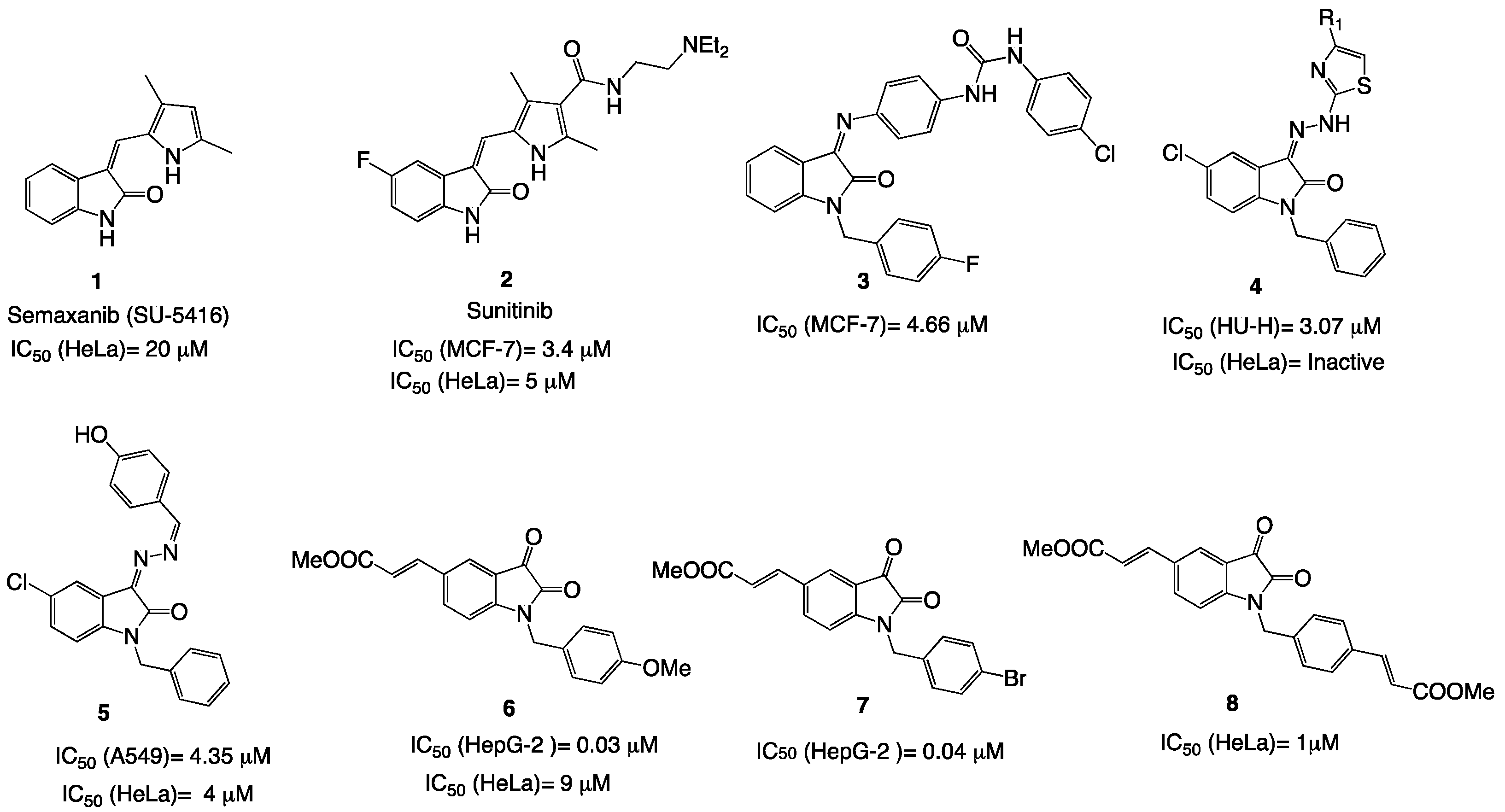

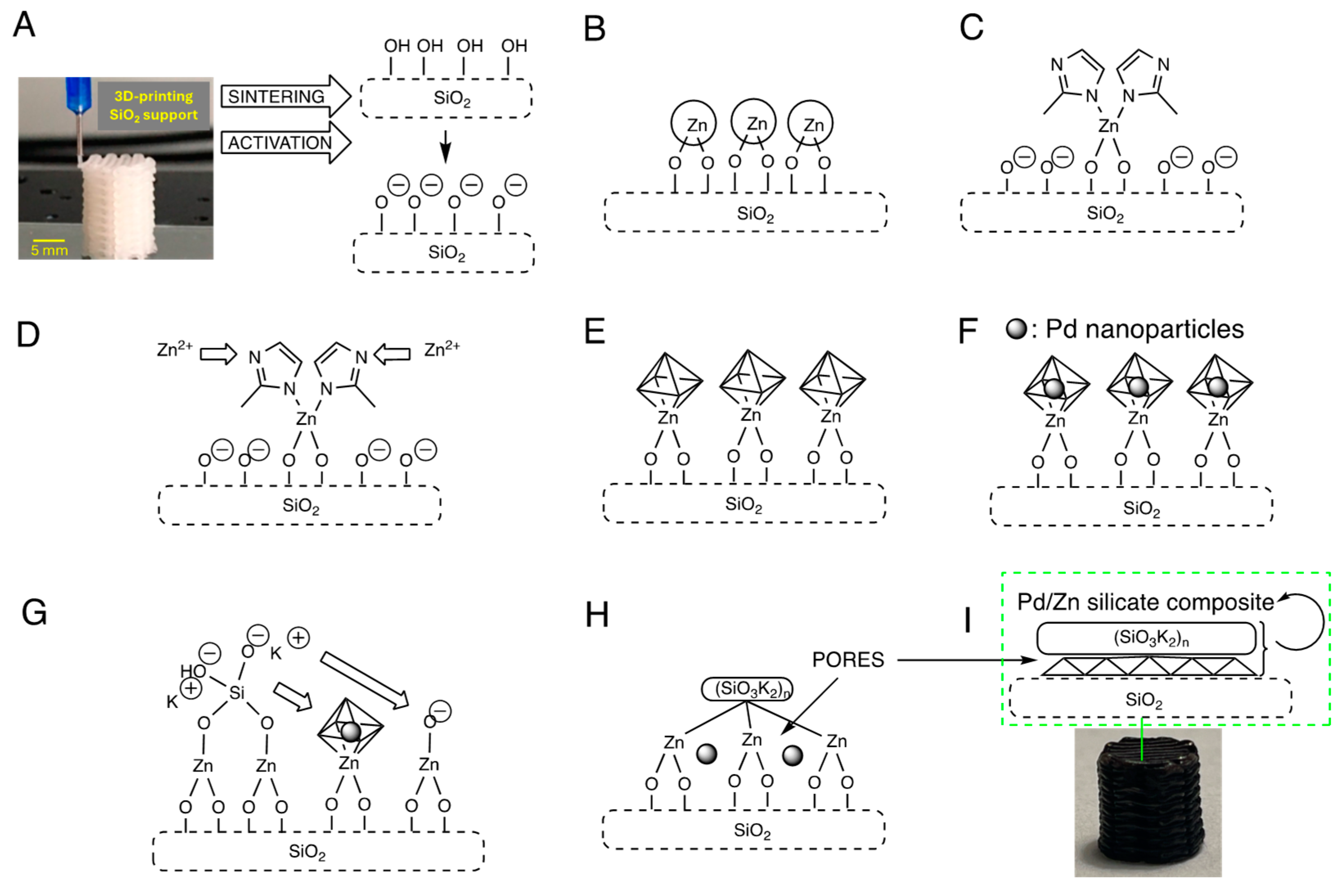

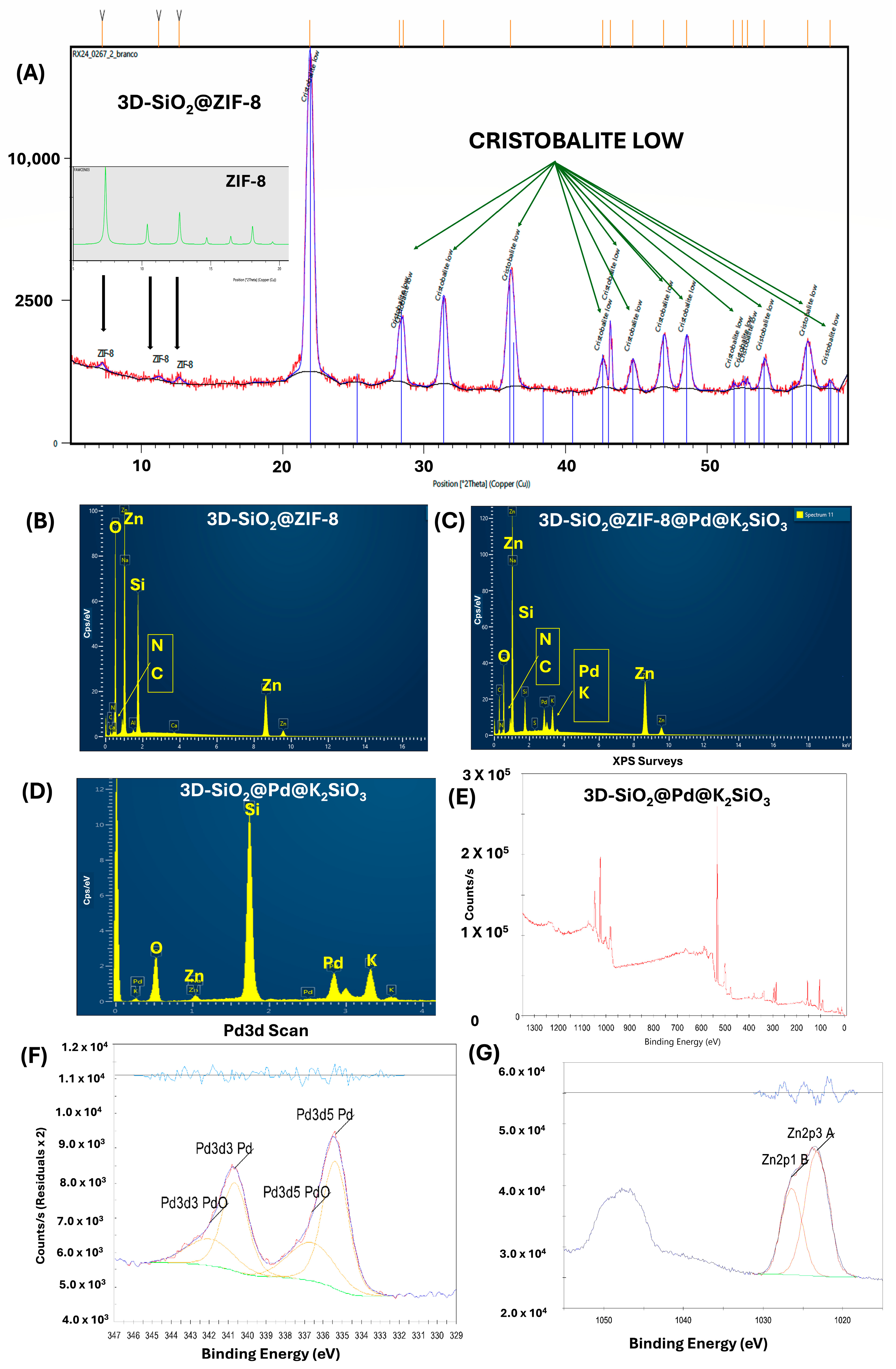
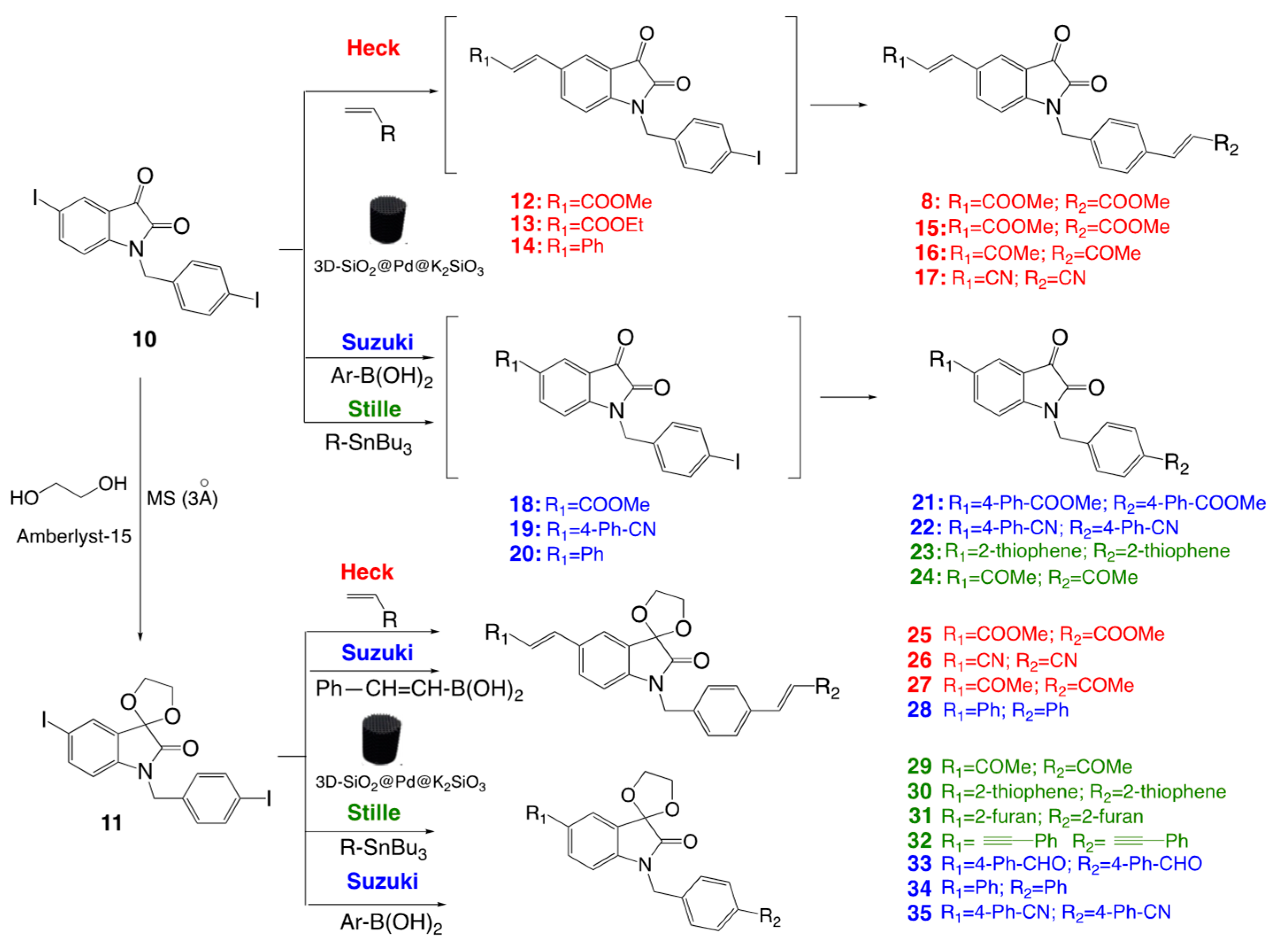

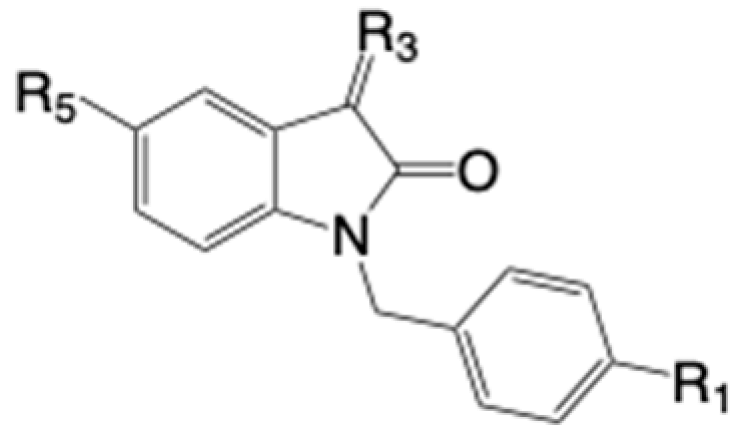 | |||||
|---|---|---|---|---|---|
| Compound | R1 | R3 | R5 | Method | Yield (%) |
| 8 | CH=CH-COOMe | O | CH=CH-COOMe | HECK 1 | 65 |
| 12 | I | O | CH=CH-COOMe | HECK 1,2 | 50 |
| 13 | I | O | CH=CH-COOEt | HECK 1,2 | 40 |
| 14 | I | O | CH=CH-Ph | HECK 1 | 75 |
| 15 | CH=CH-COOEt | O | CH=CH-COOEt | HECK 1 | 78 |
| 16 | CH=CH-COMe | O | CH=CH-COMe | HECK 1 | 67 |
| 17 | CH=CH-CN | O | CH=CH-CN | HECK 1 | 66 |
| 18 | I | O | 4-Ph-COOMe | SUZUKI 1,2,3 | 55 |
| 19 | I | O | 4-Ph-CN | SUZUKI 1,2,3 | 58 |
| 20 | I | O | Ph | SUZUKI 1,2,3 | 59 |
| 21 | 4-Ph-COOMe | O | 4-Ph-COOMe | SUZUKI 1,3 | 78 |
| 22 | 4-Ph-CN | O | 4-Ph-CN | SUZUKI 1,3 | 35 |
| 23 | 2-thiophene | O | 2-thiophene | STILLE 1 | 72 |
| 24 | COCH3 | O | COCH3 | STILLE 1 | 76 |
| 25 | CH=CH-COOMe | O-CH2CH2O | CH=CH-COOMe | HECK 4 | 80 |
| 26 | CH=CH-CN | O-CH2CH2O | CH=CH-CN | HECK 4 | 85 |
| 27 | CH=CH-COMe | O-CH2CH2O | CH=CH-COMe | HECK 4 | 87 |
| 28 | CH=CH-Ph | O-CH2CH2O | CH=CH-Ph | SUZUKI 4,5 | 85 |
| 29 | COCH3 | O-CH2CH2O | COCH3 | STILLE 4 | 85 |
| 30 | 2-thiophene | O-CH2CH2O | 2-thiophene | STILLE 4 | 84 |
| 31 | 2-furan | O-CH2CH2O | 2-furan | STILLE 4 | 78 |
| 32 | C≡C-Ph | O-CH2CH2O | CH≡C-Ph | STILLE 4 | 79 |
| 33 | 4-Ph-CHO | O-CH2CH2O | 4-Ph-CHO | SUZUKI 4,5 | 66 |
| 34 | Ph | O-CH2CH2O | Ph | SUZUKI 4,5 | 88 |
| 35 | 4-Ph-CN | O-CH2CH2O | 4-Ph-CN | SUZUKI 4,5 | 70 |
Disclaimer/Publisher’s Note: The statements, opinions and data contained in all publications are solely those of the individual author(s) and contributor(s) and not of MDPI and/or the editor(s). MDPI and/or the editor(s) disclaim responsibility for any injury to people or property resulting from any ideas, methods, instructions or products referred to in the content. |
© 2025 by the authors. Licensee MDPI, Basel, Switzerland. This article is an open access article distributed under the terms and conditions of the Creative Commons Attribution (CC BY) license (https://creativecommons.org/licenses/by/4.0/).
Share and Cite
Druta, A.; Bouhmala, R.; Ragdi, T.; Luna, M.; Bañobre-López, M.; Masaguer, C.F.; Amorín, M.; Barbosa, S.; Taboada, P.; Coelho, A. Developing Heterogeneous Porous 3D-Printed SiO2-Pd-K2SiO3 Monolithic Catalyst via Surface MOF Growth and Pyrolysis for the Synthesis of Antitumoral Isatins. Pharmaceutics 2025, 17, 505. https://doi.org/10.3390/pharmaceutics17040505
Druta A, Bouhmala R, Ragdi T, Luna M, Bañobre-López M, Masaguer CF, Amorín M, Barbosa S, Taboada P, Coelho A. Developing Heterogeneous Porous 3D-Printed SiO2-Pd-K2SiO3 Monolithic Catalyst via Surface MOF Growth and Pyrolysis for the Synthesis of Antitumoral Isatins. Pharmaceutics. 2025; 17(4):505. https://doi.org/10.3390/pharmaceutics17040505
Chicago/Turabian StyleDruta, Alexandrina, Rania Bouhmala, Teqwa Ragdi, Mariangel Luna, Manuel Bañobre-López, Christian F. Masaguer, Manuel Amorín, Silvia Barbosa, Pablo Taboada, and Alberto Coelho. 2025. "Developing Heterogeneous Porous 3D-Printed SiO2-Pd-K2SiO3 Monolithic Catalyst via Surface MOF Growth and Pyrolysis for the Synthesis of Antitumoral Isatins" Pharmaceutics 17, no. 4: 505. https://doi.org/10.3390/pharmaceutics17040505
APA StyleDruta, A., Bouhmala, R., Ragdi, T., Luna, M., Bañobre-López, M., Masaguer, C. F., Amorín, M., Barbosa, S., Taboada, P., & Coelho, A. (2025). Developing Heterogeneous Porous 3D-Printed SiO2-Pd-K2SiO3 Monolithic Catalyst via Surface MOF Growth and Pyrolysis for the Synthesis of Antitumoral Isatins. Pharmaceutics, 17(4), 505. https://doi.org/10.3390/pharmaceutics17040505









